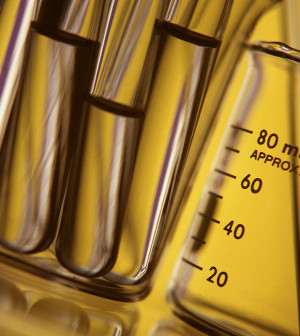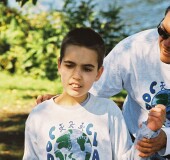- Skip Storing This Everyday Product in the Fridge Door
- Green Tea + B3 Pairing May Boost Brain Health
- Navigating Your Midlife Crisis: Embracing New Possibilities
- City Raccoons Showing Signs of Domestication
- Mapping the Exposome: Science Broadens Focus to Environmental Disease Triggers
- One Week Less on Social Media Linked to Better Mental Health
- Your Brain Changes in Stages as You Age, Study Finds
- Some Suicide Victims Show No Typical Warning Signs, Study Finds
- ByHeart Formula Faces Lawsuits After Babies Sickened With Botulism
- Switch to Vegan Diet Could Cut Your Greenhouse Gas Emissions in Half
More Clues to Spotting Autism in Siblings of Those With Disorder


Brothers and sisters of children with autism can show signs of the disorder as early as 18 months of age, a new study says.
About 20 percent of younger siblings of children with autism will be diagnosed with autism by age 3, the Yale University researchers said.
Their study included 719 younger siblings of children with autism. The siblings were assessed when they were 18 months old and again at age 3. Among those who were later diagnosed with autism, 57 percent showed signs of the disorder at 18 months and the rest developed symptoms between 18 and 36 months, the study authors reported.
In 50 percent of the siblings, a combination of poor eye contact and lack of communicative gestures or imaginative play at 18 months was most strongly associated with a later diagnosis of autism, also known as autism spectrum disorder (ASD).
A small percentage of siblings who were later diagnosed with autism had relatively normal eye contact at 18 months, but had started to display limited nonverbal communication skills and early signs of repetitive behavior, the investigators found.
“So not only do the behavioral symptoms appear at different ages, but different combinations of early symptoms may predict the diagnostic outcome,” study author Katarzyna Chawarska, an associate professor in the Yale Child Study Center at Yale School of Medicine in New Haven, Conn., said in a university news release.
“Linking these developmental dynamics with underlying neurobiology may advance our understanding of causes of ASD and further efforts to personalize treatment for ASD by tailoring it to specific clinical profiles and their developmental dynamics,” she added.
The study appears in the October issue of the Journal of the American Academy of Child & Adolescent Psychiatry.
“While the majority of siblings of children with ASD will not develop the condition themselves, for those who do, one of the key priorities is finding more effective ways of identifying and treating them as early as possible,” Chawarska said.
“Our study reinforces the need for repeated diagnostic screening in the first three years of life to identify individual cases of ASD as soon as behavioral symptoms are apparent,” she concluded.
More information
The U.S. National Institute of Neurological Disorders and Stroke has more about autism.
Source: HealthDay
Copyright © 2025 HealthDay. All rights reserved.










